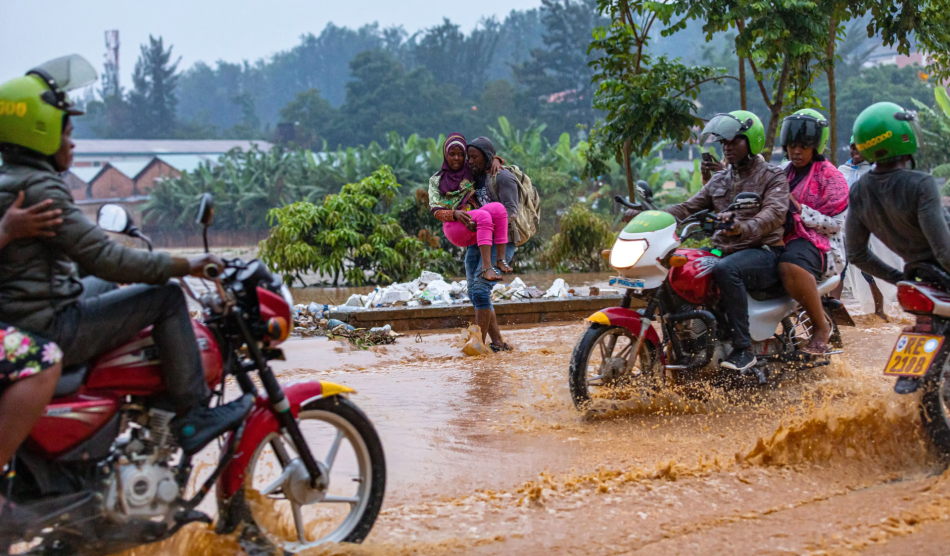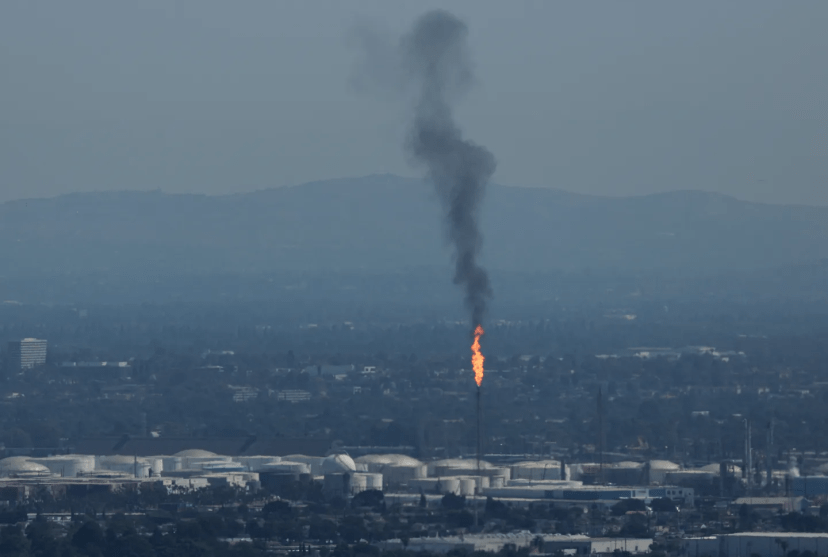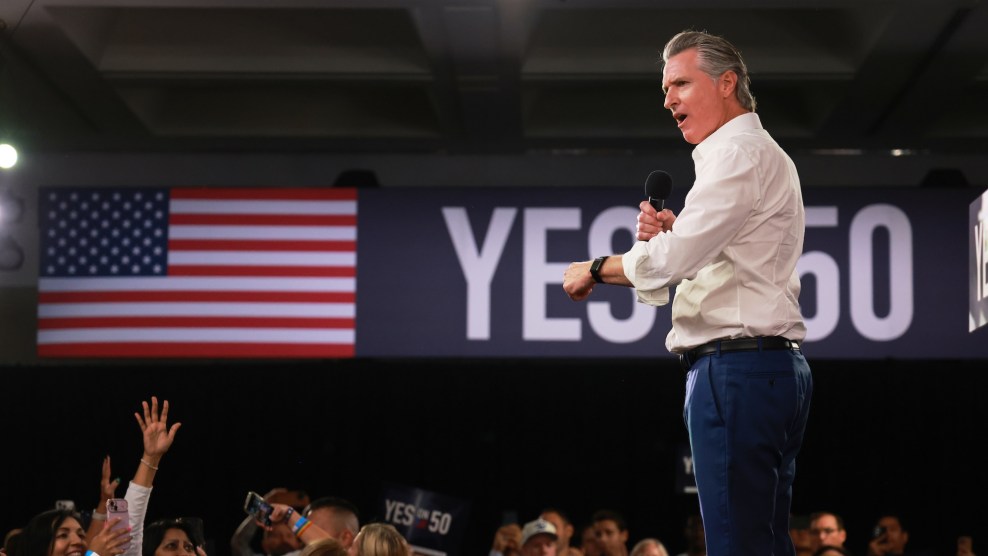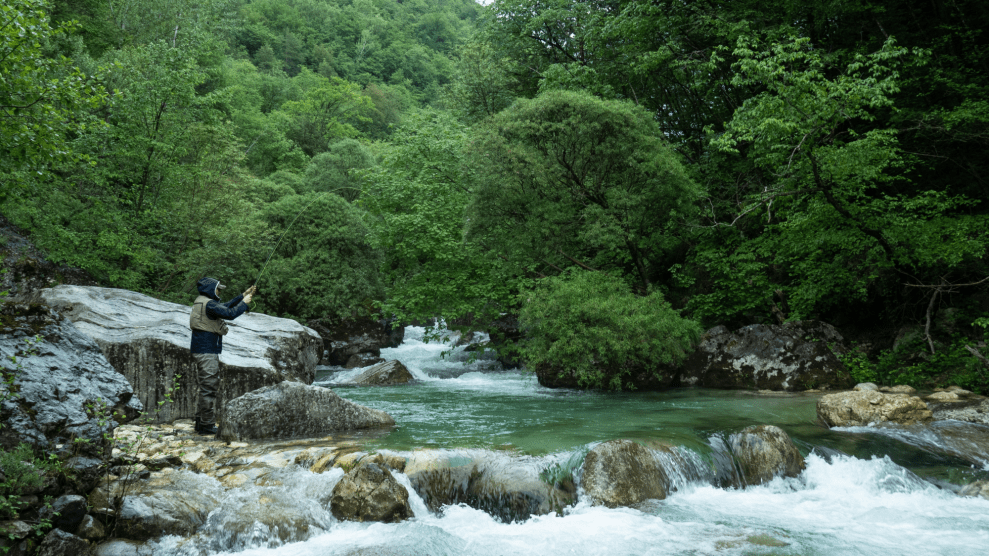On day two of what was supposed to be their historic confrontation with the International Monetary Fund and the World Bank in Washington, DC, the protesters seemed to have given up even before breakfast. By this hour on the day before, the thousands who had flocked to the nation’s capital to shut down the annual meeting of those twin pillars of the global economic order had seized the streets with authority and verve. But trolling the streets in Monday’s cold, rainy dawn, even with one of the lead protest organizers for a guide, all I could find was a couple dozen scraggly, wound-up George Washington University students marching aimlessly around the neighborhood between their campus and the IMF/Bank twin headquarters.
Downtown DC looked like a city in the aftermath of a coup. Hundreds of police, National Guardsmen, and assorted other law enforcement agents patrolled a broad buffer zone around the IMF/Bank buildings, sealing off key streets, and generally making their presence visible, circulating in foot squads and in a fleet of motorcycles, cars, vans, buses, and occasional armored personnel carriers. A clutch of police cars followed the students as they rambled through the thickening morning traffic — not stopping them from interfering with the rush-hour flow, but keeping close behind them everywhere they went.
Eventually, the students stumbled across another random march, and then another. By 9 a.m., there were perhaps a hundred assorted demonstrators chanting and stomping their way through the streets. “Whose streets? Our streets!” they insisted over and over, despite abundant vehicular evidence to the contrary. Out of six marchers whom I asked, only one even claimed to know where the crowd was going.
Then, suddenly, down the street at the march’s head came a series of percussive bangs, and a pack of protesters sprinting away from it. Some dreamy kid, I found out later, had decided to create his own private Tiananmen Square scene by blocking a van full of police. The cops had instantly leapt out and started firing tear gas and pepper spray, leading to general chaos. I ran up to find a handful of protesters on their knees retching from the gas, while the police clubbed several others to the ground. Those who didn’t scatter right away quickly regrouped around their comrades, now prone and cuffed on the sidewalk, chanting “Let them go!” But more police quickly and decisively routed them with nightsticks and pepper spray.
Less than an hour later, a surviving fragment of that march — 30 or 40 young, black-clad anarchist types – was making its way vaguely down a commercial street when for no apparent reason, a line of cops in full riot gear — helmets, black breastplates, finger-protecting elbow-length gloves and plastic shin guards — marched up to block the intersection ahead of them. The protesters fell back, clustering up against a shoe store display window. Without warning, a squad of police on motorcycles roared up behind them, parking their bikes in formation to block the protesters in. Still more reinforcements quickly arrived, full-geared riot police in black body armor. There were easily twice as many cops as protesters on the scene. “This is it?” the leader of the reinforcements asked the officer in charge, as he looked incredulously at the bedraggled little knot of wet, unhappy teenagers they were surrounding. That was indeed it. All the kids were summarily arrested and loaded off on a school bus.
This didn’t play well with the locals, many of whom came out of the nearby shops to gawk at the spectacle. “This is an awful, sick sight,” said Edward Utyro, a fortyish DC resident, who happened to have been walking by. “I feel like my tax dollars are being flushed down the toilet.”
Dispirited, I headed off, following rumors of a larger march a few blocks down. After all the energy and action of yesterday, it seemed the rain and police had definitively answered the question of who the streets belonged to. Then I turned a corner onto I Street, one of the city’s major thoroughfares, and was suddenly swept up.
There couldn’t have been more than 2,000 people in the march, but it was compact, and pulsating with energy, and occupied all four lanes of the street. The giant puppets, the signs denouncing everything from oppression of animals to the rape of rainforests, the knots of whooping people dancing to improvised drum music were suddenly back in full force.
The march moved briskly along to occupy a broad, open intersection, at one end of which metal barriers and dozens of police backed by camouflage-clad National Guard soldiers blocked access to the IMF/Bank headquarters a couple of blocks away. A couple hundred people sat down decisively on the soaking asphalt; this was to be the major confrontation of the day.
The conflict was simple: The protesters wanted to get to the IMF and the World Bank, and the police wanted to keep them from it. Tension mounted as protesters harangued the grimly stoic police, a wall of Darth Vader-look-alikes in floor-length black raincoats, gas masks, and helmets. At several points, the Vaders let loose wide, long bursts of pepper spray to drive the protesters back. But each time, the protesters — many of them graduates of extensive nonviolence training sessions given the week before — only fell back, without panic, and then surged into position again as soon as the spraying stopped. It was an impressive display of protest tactics: disciplined, aggressive, but firmly nonviolent action. A handful of militant anarchists objected — “You can’t fight violence without violence!” one hollered — but they were a clearly outnumbered minority.
Eventually Terry Gainer, DC’s assistant police chief, opened negotiations with a diminutive, wiry San Franciscan named Mary Bull, designated as spokesperson by the protesters and dressed for the occasion in a plastic-foam tree outfit. (For those who have never seen a top law enforcement officer of a major city deep in serious discussion with a woman dressed as a tree, rest assured it is truly a beautiful sight.)
The negotiations dragged on for over an hour, each new proposal having to be brought back to the would-be arrestees for consensus agreement. The rest of the crowd passed their time chanting, dancing around impromptu drum circles and being interviewed by the flock of media types looking for quotes while they waited for some real action. A deal was struck: The police opened a section of the barricades, and those protesters who so chose, in orderly groups of 10, marched through in the direction of the IMF/Bank headquarters, whereupon they were politely arrested. Gainer himself escorted the groups through the barricades, holding a bouquet of flowers given to him by a protester. All told, several hundred people ended up in police custody.
The denouement left everyone happy. The police got to look reasonable — no easy feat for a heavily-armed force facing off against a cheery mob of eclectically-dressed, mostly young civilians. The protesters got to get arrested for the cause, and, in the meantime, got massive media attention for their action, and perhaps, for the issues they were actually protesting about.
Thoroughly sodden and chilled, I was personally ready to call it a day. But when I came back outside after a quick lunch, expecting to find everyone gone, the remaining protesters — still several hundred people — had instead fallen out into a rain-soaked street party. In short order, someone with a bullhorn got everyone marching back off down Pennsylvania, chanting and drumming away, hoisting the soggy surviving puppets high.
“Yeah, I’m cold and wet,” Chris McGill, a toothy 22-year-old from Denver told me happily. “But I’m also having fun.”
At the end of the day, I asked him, would all the protesting actually end up making any real difference? “It’s already making a difference,” he said. “Look at all these people out here in the streets, yelling their heads off about social and environmental justice.”
















